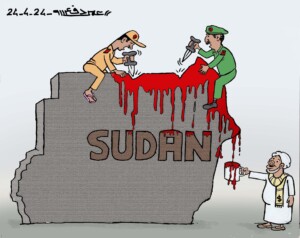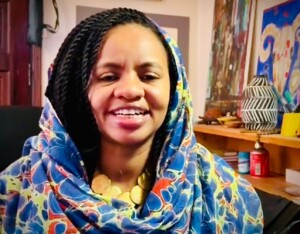Electricity tariff hike ‘a death blow to Sudanese industry’
An expert in the field of electric power has harshly criticised the new increase in Sudan’s electricity tariffs for the residential, commercial, and industrial sectors and questions how the increases can be justified.
An expert in the field of electric power has harshly criticised the new increase in Sudan’s electricity tariffs for the residential, commercial, and industrial sectors and questions how the increases can be justified.
In an interview with Radio Dabanga, Dr Jon El Jundi described the increased tariffs as “a death blow to Sudanese industry”.
Dr El Jundi pointed out that a large number of factories have already closed because of the high cost of production, including electricity. He added that the previous increases in electricity tariffs for the residential, service, commercial and agricultural sectors still represent a great burden on the public.
He expressed surprise at increasing the electricity tariff for the residential sector from the high consumption category to 160 Piasters. He questioned the figures provided by the Minister of Electricity for the cost of producing a kilowatt of electricity at 160 Piasters and described it as unreasonable and unconvincing.
Dr El Jundi explained to Radio Dabanga that the former government committees estimated the cost of a kilowatt at 12 Piasters. He pointed to the low cost of electricity production in Sudan currently because of the reduction of high-cost thermal generation to 17 per cent, while the percentage of hydro generation is 80 per cent, and the energy imported from Ethiopia is three per cent.
He expressed his concern at the Minister of Electricity’s recognition that the percentage of beneficiaries of electricity services in the Sudan is 38 compared with the deprivation of 62 per cent of the citizens.
He played down the amount of electricity produced from the dams and explained to Radio Dabanga that the total electricity generated and imported is 3,500 megawatts which does not match with the population of 30 million people.
Paradox
Dr El Jundi pointed out that Sudan has one of lowest consumptions of electricity per capita – that the peak electricity consumption in Sudan is 3,000 megawatts.
He pointed out that the peak consumption in Egypt, which has a population of 100 million people, is 30,000 megawatts which shows a paradox.
He pointed out that the lost electricity rate in Sudan far exceeds the global average because of the high load on networks and the poor efficiency of generators and transformers because of lack of periodic maintenance.
The Ministry of Water Resources and Electricity announced that about 62 per cent of the population of Sudan live without electricity, compared to 38 per cent enjoying services.
Minister of Electricity, Mutaz Mousa, defended the increase in the tariff of electricity for some sectors and attributed that to the high exchange rate of foreign currency, inflation, and operational factors.
He explained that the increase in tariffs has led to a decrease in subsidies paid by the state annually from SDG 7.9 billion to SDG 4.4 billion.
According to the Ministry of Water Resources and Electricity, the amendments to the tariff stipulate that the residential sector is supported by 96.7 per cent to 88 per cent without a change in tariff categories to monthly consumption of 1,500 kWh which corresponds to monthly consumption at the level of one meter up to SDG 2,300 per month.











 and then
and then